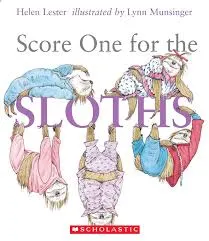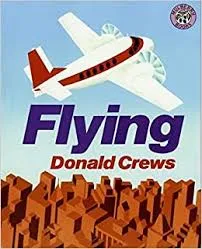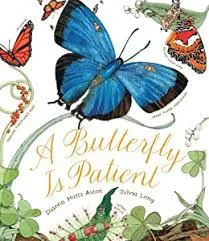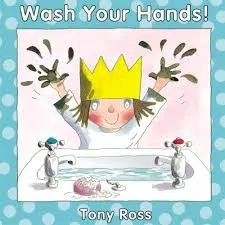
8 Back-to-School Picture Books for Teaching Coronavirus Procedures
This content contains affiliate links. When you buy through these links, we may earn an affiliate commission.
I am a preschool teacher and just got word that my school is planning on opening on time and full time amidst the COVID-19 Pandemic. At the end of August, I will welcome my 18 brand new, nervous, excited, wiggly, and chatty students into my classroom. I will also need to implement the following procedures whenever possible: social distancing, mask wearing, and hand washing.
If you have ever been around a group of preschoolers, you will know that this is a huge undertaking. If left to their own devices, small children end up piled together like puppies. When sitting on a bench, they pack together like sardines in a tin. Little kids often forget their glasses, chew on their headbands, and pull out their own hair bows. How are they going to keep masks on their faces? I have caught children licking the rock salt that they dug out of their shoe treads after walking on an icy sidewalk. They do not know about germs. How exactly are teachers supposed to keep bouncy, sticky, and curious preschool students apart, masked, happy, and still learning for seven hours a day?
Instead of panicking, I’m trying to figure out how to teach and come to terms with these COVID-19 procedures that I know go against child development and best teaching practices. So, I am starting with books. At the beginning of the school year, I always read such favorites as First Day Jitters, All Are Welcome, and My Friends. This year, I have a new set of books to help teach social distancing, hand washing, and mask wearing. For each book, I listed the synopsis and lesson or purpose for reading. I hope you find this list helpful if you are a parent, teacher, or anyone else who has a young child returning to the classroom.
A little boy is excited about his first day of kindergarten! As he eats his breakfast, his mom frets about the upcoming school year. Is he ready to go to a big school? Will he have enough time to eat his lunch? Will she make any mom friends? Her son reassures her that they are both ready! This is a delightful, energetic book about this milestone in a child’s life.
When I read this book with my students, I plan on reading the story first and then going back and focusing on some of the illustrations. In one illustration, the boy meets his teacher. They stand apart from each other, smile, and talk to each other. This illustration can be used to explain social distancing. In another picture, the boy hugs his mom. On this page, I will explain that hugging should be saved for after school. Hopefully, this book will illustrate that children can play, talk, and be together, while still maintaining social distance.
Octopus lives in her cozy cave and prefers to be alone. Instead of talking to the puffers, seahorses, and squid, Octopus does everything she can to be alone. She blends in with the ocean floor, squirts ink to block herself, and eventually moves beyond the reef to a secluded cave. While happy to be alone at first, Octopus soon wonders what the others are up to. This is a gorgeously illustrated book about the importance of both being alone and being around friends. It also features the cutest group of seahorses I have ever seen!
The lesson for this one takes a little tweaking. Obviously, the moral of the story is that it is important to be alone sometimes and to be with friends sometimes. After reading this book, I am going to show my students the illustrations of the octopus in her cozy cave. I plan on challenging my students to be like octopuses who like a lot of space. Instead of always saying “six feet” or “social distance,” I will remind my students to be like octopuses. Fingers crossed they will remember Octopus Alone and spread out.
This is a hilarious book by the team that brought us Tacky the Penguin and Hooway for Wodney Wat. In Score One for the Sloths, the sloths attend Sleepy Valley Sloth School. At sloth school, the students contentedly move at a very slow pace. They spend most of their days napping, dreaming, and lying around. All is peaceful until a new student named Sparky enrolls and then discovers that the sloths’ school is slated for closure! Sparky has more energy than most sloths, but will she be able to help her new classmates save their beloved school?
During the first week of school, read this book after reading Octopus Alone. Show the students the illustrations of the sloths sleeping and piling on top of one another. Remind students that this year, we are going to be like octopuses who need a lot of room. We should not be like sloths. When students forget to social distance, remind them to be like an octopus instead of a sloth.
This bright and simple picture book introduces children to the world of airplanes. In this book, planes taxi along the runway, take off, and fly across the country. This is a captivating book for any child interested in planes, propellers, or flying.
This is a great book to start off this very different school year. It is a quick read and one that children enjoy reading multiple times. When students move around the classroom, I am going to encourage them to walk with their arms out to the side. We will call these our “airplane arms.” With arms out, they will at least be aware of maintaining social distance on either side of them.
In A Butterfly is Patient, Dianna Hutts introduces readers to the fascinating world of butterflies. Butterflies are creative, helpful, poisonous, and spectacular! Each page presents young readers with facts about butterflies and gorgeous, watercolor illustrations.
Along with encouraging students to move like airplanes, I will also invite them to move like butterflies. Butterflies must move carefully with their fragile wings spread widely. When moving around the classroom, I plan on encouraging students to move like butterflies—wings out and away from other butterflies’ wings.
Little Princess loves playing outside and getting dirty. When she comes inside, the cook, queen, and king all remind her to wash her hands before eating her cake. They also ask her to wash her hands after sneezing, using the potty, and playing with her dog. Annoyed with all of the hand washing, Little Princess questions why it is so important. The maid finally explains that Little Princess must wash off the germs and nasties. With her imagination running away, Little Princess imagines germs and nasties as only a small child can.
After reading this story, I will invite my students to help me make a list of all of the times we should wash our hands. We will also visit the restroom and practice washing our hands with soap and water. With 18 students and 2 very small sinks, I am still trying to figure out the most effective and quickest way to achieve this.
This is a great book for showing children how to control the spread of germs. The simple text and bright illustrations show kids how to sneeze into their elbows, wash their hands, and turn their heads when coughing. This is a great resource and teaching tool for any home or classroom!
While reading this story, students and I will practice coughing into our sleeves (while wearing our masks) and throwing tissues into the trashcan. We will also check our list of when to wash hands and add any from this book that we forgot. Finally, due to the coronavirus, I will either skip over the part in the book about blowing kisses when sick or encourage students to do this while wearing a mask.
This bright picture book explains to small children why the people around them are wearing masks. Author Debbie Qiu wrote this book in 2020 to help children understand that masks are not scary. This book will help lessen the fear surrounding teachers, parents, and other adults wearing masks.
Many small children are afraid of masks. They are often frightened by Halloween masks, clowns in make-up, or costumed characters at theme parks. I plan on reading this book to show children that the masks that we wear in the classroom are not scary. After reading this book, I would love to have a mask fashion show and encourage students to show off their masks. We will also discuss how to wear a mask and the importance of not sharing, chewing on, or playing with masks. Fortunately, my school is encouraging and not requiring mask wearing for students.
This is an adorable book about ten masked superkids who work together to save their city. Colorful illustrations, silly bad guys, and rhyming text draw children into this book about kids saving the day. Count along with the superheroes as they fly through the sky, fight villains, and thwart their evil plans!
After sharing this really fun book, I am going to ask my students to help me make a list of superheroes who wear masks. Spider-Man, Captain America, and Batman are names that I plan on adding to our lined chart paper. When it is time to mask up or if students need a reminder to wear their masks properly, I will tell them to be like a superhero. If I am really on top of my game, I will remember certain students’ favorite superheroes. I might tell one to suit up like Captain America while encouraging another to pretend to be Catwoman. Yes, I realize that most superhero masks cover their eyes and our masks cover our mouths, but kids will get the idea and, hopefully, rise to the occasion!
With desks in rows instead of small groups, children playing apart instead of together, and face masks over their cute smiles and missing baby teeth, this school year is going to look and feel very different. After time in the classroom social distancing like octopuses, moving with airplane arms, and repeatedly washing away the germies and nasties, I am hopeful that we can soon return to the classroom environment that I love. Until then, I will try my hardest to make this year amazing for my students, even if I have to remind them to stop wearing their face masks like gnome beards multiple times a day.
Books for Teaching Social Distancing
 Mom, It’s My First Day of Kindergarten written and illustrated by Hyewon Yum
Mom, It’s My First Day of Kindergarten written and illustrated by Hyewon Yum
A little boy is excited about his first day of kindergarten! As he eats his breakfast, his mom frets about the upcoming school year. Is he ready to go to a big school? Will he have enough time to eat his lunch? Will she make any mom friends? Her son reassures her that they are both ready! This is a delightful, energetic book about this milestone in a child’s life.
When I read this book with my students, I plan on reading the story first and then going back and focusing on some of the illustrations. In one illustration, the boy meets his teacher. They stand apart from each other, smile, and talk to each other. This illustration can be used to explain social distancing. In another picture, the boy hugs his mom. On this page, I will explain that hugging should be saved for after school. Hopefully, this book will illustrate that children can play, talk, and be together, while still maintaining social distance.
 Octopus Alone written and illustrated by Divya Srinivasan
Octopus Alone written and illustrated by Divya Srinivasan
Octopus lives in her cozy cave and prefers to be alone. Instead of talking to the puffers, seahorses, and squid, Octopus does everything she can to be alone. She blends in with the ocean floor, squirts ink to block herself, and eventually moves beyond the reef to a secluded cave. While happy to be alone at first, Octopus soon wonders what the others are up to. This is a gorgeously illustrated book about the importance of both being alone and being around friends. It also features the cutest group of seahorses I have ever seen!
The lesson for this one takes a little tweaking. Obviously, the moral of the story is that it is important to be alone sometimes and to be with friends sometimes. After reading this book, I am going to show my students the illustrations of the octopus in her cozy cave. I plan on challenging my students to be like octopuses who like a lot of space. Instead of always saying “six feet” or “social distance,” I will remind my students to be like octopuses. Fingers crossed they will remember Octopus Alone and spread out.
 Score One for the Sloths written by Helen Lester and illustrated by Lynn Munsinger
Score One for the Sloths written by Helen Lester and illustrated by Lynn Munsinger
This is a hilarious book by the team that brought us Tacky the Penguin and Hooway for Wodney Wat. In Score One for the Sloths, the sloths attend Sleepy Valley Sloth School. At sloth school, the students contentedly move at a very slow pace. They spend most of their days napping, dreaming, and lying around. All is peaceful until a new student named Sparky enrolls and then discovers that the sloths’ school is slated for closure! Sparky has more energy than most sloths, but will she be able to help her new classmates save their beloved school?
During the first week of school, read this book after reading Octopus Alone. Show the students the illustrations of the sloths sleeping and piling on top of one another. Remind students that this year, we are going to be like octopuses who need a lot of room. We should not be like sloths. When students forget to social distance, remind them to be like an octopus instead of a sloth.
 Flying written and illustrated by Donald Crews
Flying written and illustrated by Donald Crews
This bright and simple picture book introduces children to the world of airplanes. In this book, planes taxi along the runway, take off, and fly across the country. This is a captivating book for any child interested in planes, propellers, or flying.
This is a great book to start off this very different school year. It is a quick read and one that children enjoy reading multiple times. When students move around the classroom, I am going to encourage them to walk with their arms out to the side. We will call these our “airplane arms.” With arms out, they will at least be aware of maintaining social distance on either side of them.
 A Butterfly is Patient written by Dianna Hutts Aston and illustrated by Sylvia Long
A Butterfly is Patient written by Dianna Hutts Aston and illustrated by Sylvia Long
In A Butterfly is Patient, Dianna Hutts introduces readers to the fascinating world of butterflies. Butterflies are creative, helpful, poisonous, and spectacular! Each page presents young readers with facts about butterflies and gorgeous, watercolor illustrations.
Along with encouraging students to move like airplanes, I will also invite them to move like butterflies. Butterflies must move carefully with their fragile wings spread widely. When moving around the classroom, I plan on encouraging students to move like butterflies—wings out and away from other butterflies’ wings.
Books About Hand Washing
 Wash Your Hands written and illustrated by Tony Ross
Wash Your Hands written and illustrated by Tony Ross
Little Princess loves playing outside and getting dirty. When she comes inside, the cook, queen, and king all remind her to wash her hands before eating her cake. They also ask her to wash her hands after sneezing, using the potty, and playing with her dog. Annoyed with all of the hand washing, Little Princess questions why it is so important. The maid finally explains that Little Princess must wash off the germs and nasties. With her imagination running away, Little Princess imagines germs and nasties as only a small child can.
After reading this story, I will invite my students to help me make a list of all of the times we should wash our hands. We will also visit the restroom and practice washing our hands with soap and water. With 18 students and 2 very small sinks, I am still trying to figure out the most effective and quickest way to achieve this.
 Germs Are Not for Sharing written by Elizabeth Verdick and illustrated by Marieka Heinlen
Germs Are Not for Sharing written by Elizabeth Verdick and illustrated by Marieka Heinlen
This is a great book for showing children how to control the spread of germs. The simple text and bright illustrations show kids how to sneeze into their elbows, wash their hands, and turn their heads when coughing. This is a great resource and teaching tool for any home or classroom!
While reading this story, students and I will practice coughing into our sleeves (while wearing our masks) and throwing tissues into the trashcan. We will also check our list of when to wash hands and add any from this book that we forgot. Finally, due to the coronavirus, I will either skip over the part in the book about blowing kisses when sick or encourage students to do this while wearing a mask.
Books About Wearing a Face Mask
 Why is Everyone Wearing a Mask? written and illustrated by Debbie Qiu
Why is Everyone Wearing a Mask? written and illustrated by Debbie Qiu
This bright picture book explains to small children why the people around them are wearing masks. Author Debbie Qiu wrote this book in 2020 to help children understand that masks are not scary. This book will help lessen the fear surrounding teachers, parents, and other adults wearing masks.
Many small children are afraid of masks. They are often frightened by Halloween masks, clowns in make-up, or costumed characters at theme parks. I plan on reading this book to show children that the masks that we wear in the classroom are not scary. After reading this book, I would love to have a mask fashion show and encourage students to show off their masks. We will also discuss how to wear a mask and the importance of not sharing, chewing on, or playing with masks. Fortunately, my school is encouraging and not requiring mask wearing for students.
 Ten Little Superheroes written by Mike Brownlow and illustrated by Simon Rickerty
Ten Little Superheroes written by Mike Brownlow and illustrated by Simon Rickerty
This is an adorable book about ten masked superkids who work together to save their city. Colorful illustrations, silly bad guys, and rhyming text draw children into this book about kids saving the day. Count along with the superheroes as they fly through the sky, fight villains, and thwart their evil plans!
After sharing this really fun book, I am going to ask my students to help me make a list of superheroes who wear masks. Spider-Man, Captain America, and Batman are names that I plan on adding to our lined chart paper. When it is time to mask up or if students need a reminder to wear their masks properly, I will tell them to be like a superhero. If I am really on top of my game, I will remember certain students’ favorite superheroes. I might tell one to suit up like Captain America while encouraging another to pretend to be Catwoman. Yes, I realize that most superhero masks cover their eyes and our masks cover our mouths, but kids will get the idea and, hopefully, rise to the occasion!
With desks in rows instead of small groups, children playing apart instead of together, and face masks over their cute smiles and missing baby teeth, this school year is going to look and feel very different. After time in the classroom social distancing like octopuses, moving with airplane arms, and repeatedly washing away the germies and nasties, I am hopeful that we can soon return to the classroom environment that I love. Until then, I will try my hardest to make this year amazing for my students, even if I have to remind them to stop wearing their face masks like gnome beards multiple times a day.






















